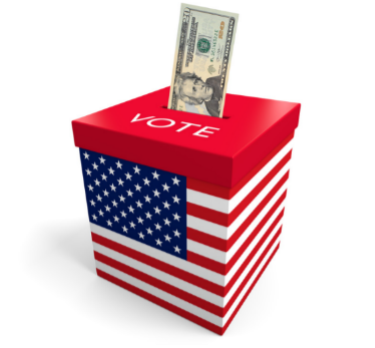
Ahead of the election, it is appropriate to blend aspects of markets, psychology, and politics in this quarter’s investment letter. The next investor letter will be encompassing a new year and a new President, so we believe that it is important to have this letter serve as a prescription to help calm some nerves.
Since August 2023, the size of our firm has doubled by staff, assets under management, and households serviced. I’ve spoken with many about markets, economics, and the political environment. We haven’t spoken much about the psychology of what we do and how we do it. It’s important to establish that our portfolios focus on risk management. Risk is the measure of a bad outcome which is usually a permanent impairment to capital. We maintain a long-term focus on our portfolios and holdings. Short-term performance, events, trading, hyperactivity, or volatility is not a day-to-day worry for us. We recalibrate portfolios when we observe a changing in the tides, such as we did late last year resulting in the portfolios we have today. We design and implement portfolios with the goal of asymmetric outcomes – saving on downside and keeping up with the market. My wife and I went out to one of our frequently visited restaurants last week – El Nopal in Erlanger, Kentucky. This is a generic, local Tex-Mex restaurant. While we were sitting there, we talked about why we came back basically every week or two. On top of delivering top quality service and the staff knowing us, we discussed the food. The food is consistently good, sometimes great, and rarely bad. That encompasses how we run our portfolios and connect with our clients. We want to deliver top-notch service and attempt to deliver consistently good outcomes while seeking to avoid the bad outcomes.
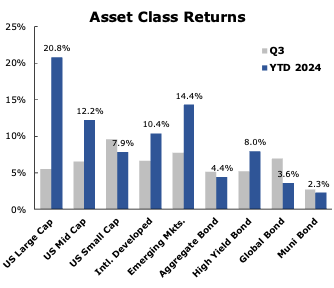
The overall economic environment continues to exhibit late cycle conditions. This past quarter, the U.S. Federal Reserve (the Fed) cut rates by 0.50%. This recalibration of policy accepts an environment where inflation continues to taper into range and that the labor market is tightening. Continued weakness in energy prices have helped ease the backdrop that we’ve been living with. We’ve been living in a multi-decade stretch of relatively cheap capital as exhibited by the knee-jerk policies of the Fed. This time, the Fed has recognized and adjusted policy to correspond with events that are occurring in the economy in a thoughtful manner.
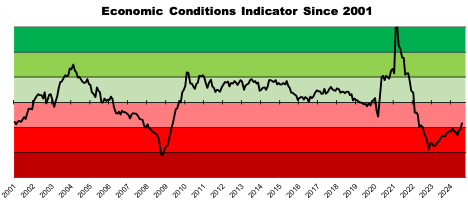
Our team believes we are in a type of recession known as a “rolling recession”. In our U.S. Macroeconomic Indicator that we produce and publish, we’ve been seeing various aspects of the economy turning over at different points in time; but not all at once. We believe we are emerging from a housing recession, that a manufacturing recession is imminent, and that a services recession will follow. The Fed adjusting policy downward was an attempt to avoid a hard landing scenario – or where multiple aspects of the economy converge and move negatively. We think that the Fed is going to run with a rolling recession and say that they’ve achieved a soft landing.
The effect of a rolling recession on domestic equity markets is difficult to predict. Based on previous environments, value has the potential to be more attractive than growth over the next year and that the market could continue to broaden beyond the Magnificent 7 into broader large, mid, and small cap stocks. The NASDAQ index recently corrected 13% driven mostly by the top 10 names in the index juxtaposed with the remainder of the NASDAQ where the average individual firm is down nearly 65% from their all-time highs. This dislocation breeds opportunity within the broader market. Overseas, we continue to see opportunities in international developed and emerging markets. Some of these areas have had tight capital controls on their markets which appear to be opening to their citizens. These economies, especially emerging markets, need to have growth and loosened capital controls to ensure that the power structure that exists continues with little instability.
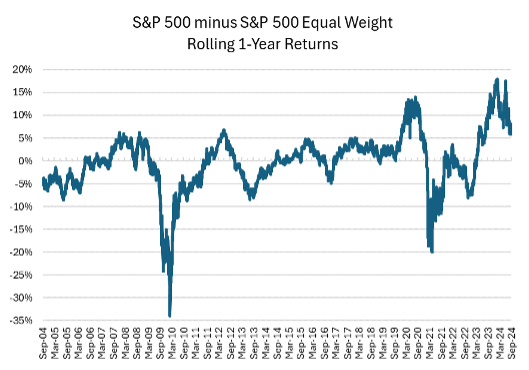
Fixed income opportunities continue to exist. The market broadly anticipated and priced in the 0.50% rate cut that occurred. The market continues to expect further rate cuts, which has started to reduce the correlation between equities and fixed income. Going forward, we expect that stocks and bonds will act in a more traditional way where the benefit of diversification is pronounced, and correlations continue to drop.
If you noticed, we didn’t publish a third quarter investor letter. As I finished writing it, there were three black-swan events that I hadn’t contemplated which made a lot of points moot. First, there was the Biden/Trump Debate that went terribly for President Biden. Second, there was an assassination attempt on Former President Trump. Third, Vice President Harris was tapped as the Democratic Presidential candidate and got full support in 48 hours. She performed well in the debate and ignited the base, but the election will inevitability be decided by thousands of swing voters in 3 or 4 key swing states. For perspective on previous elections:
- Former President Trump lost by about 81,000 votes in four key states
- Hillary Clinton lost by about 100,000 votes in three key states
- Al Gore lost by about 1,600 votes – mostly in Florida
On top of tight polling, there are many things bubbling under the surface. The tensions are flaring in the Middle East with everyone trying to calm the situation as it has the potential to spiral out of control rapidly. The longshoremen had a short strike with negotiations that are going to continue through January. The debt ceiling will be revisited in January and the Tax Cuts and Jobs Act expires in October of 2025. A tail risk event could swing the election one way or another. If a state supreme court infringes on reproductive rights between now and November, the election could swing in the favor of Vice President Harris. If a child gets hit and killed by an illegal immigrant speeding through a school zone and immigration becomes top of mind, it could swing in the favor of Former President Trump. The environment this year is set to be a flash-pan decision that even the Las Vegas odds have at 50/50 odds.
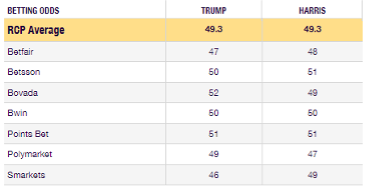
As we like to remind our clients, time in the market is always more important than timing the market. It is important to stick to a long-term plan. If you have any questions, please don’t hesitate to reach out to our team.
DISCLOSURES
Asset allocation does not assure or guarantee better performance and cannot eliminate the risk of investment losses. Information has been obtained from sources believed to be reliable, though not independently verified. Any forecasts are hypothetical and represent future expectations and not actual return volatilities and correlations will differ from forecasts. This report does not represent a specific investment recommendation. The opinions and analysis expressed herein are based on Concentric Wealth Management research and professional experience and are expressed as of the date of this report. Please consult with your advisor, attorney and accountant, as appropriate, regarding specific advice. Past performance does not indicate future performance and there is risk of loss.
When referencing asset class returns or statistics, the following indices are used to represent those asset classes, unless otherwise noted. Each index is unmanaged, and investors can not actually invest directly into an index:
- US Large Cap – S&P 500 Total Return
- US Mid Cap – S&P 400 Total Return
- US Small Cap – S&P 600 Total Return
- International Developed – MSCI EAFE Total Return
- Emerging Markets – MSCI Emerging Markets Total Return
- Aggregate Bond – Bloomberg US Aggregate
- High Yield Bond – Bloomberg US Corporate High Yield
- Global Bond – Bloomberg Global Aggregate
- Municipal Bond – Bloomberg Municipal Bond
Domestic Equity can be volatile. The rise or fall in prices take place for a number of reasons including, but not limited to changes to underlying company conditions. International Equity can be volatile. The rise or fall in prices take place for a number of reasons including, but not limited to changes to underlying company conditions. Fixed Income securities are subject to interest rate risks, the risk of default and liquidity risk. U.S. investors exposed to non-U.S. fixed income may also be subject to currency risk and fluctuations. Cash may be subject to the loss of principal and over a longer period of time may lose purchasing power due to inflation sector or industry factors, or other macro events. These may happen quickly and unpredictably. International equity allocations may also be impacted by currency and/or country specific risks which may result in lower liquidity in some markets. Marketable Alternatives involves higher risk and is suitable only for sophisticated investors. Along with traditional market risks, marketable alternatives are also subject to higher fees, lower liquidity and the potential for leverage that may amplify volatility or the potential for loss of capital. Additionally, short selling involved certain risks including, but not limited to additional costs, and the potential for unlimited loss on certain short sale positions.
S&P Total Return 500 – Covers the 500 largest companies that are in the United States. These companies can vary across various sectors.
S&P MidCap 400 Total Return Index- A stock market index from S&P Dow Jones Indices. The index serves as a barometer for the U.S. mid-cap equities sector and is the most widely followed mid-cap index.
S&P SmallCap Total Return 600 – Seeks to measure the small-cap segment of the U.S. equity market. The index is designed to track companies that meet specific inclusion criteria to ensure that they are liquid and financially viable.
MSCI EAFE Total Return Index – An equity index which captures large and mid cap representation across 21 Developed Markets countries* around the world, excluding the US and Canada. The index covers approximately 85% of the free float adjusted market capitalization in each country.
MSCI Emerging Markets Total Return Index – Captures large and mid cap representation across 25 Emerging Markets (EM) countries. The index covers approximately 85% of the free float-adjusted market capitalization in each country.
Bloomberg US Aggregate Bond Total Return Index – Used as a benchmark for investment grade bonds within the United States.
Bloomberg US Corporate High Yield Total Return Index – Covers performance for United States high yield corporate bonds. This index serves as an important benchmark for portfolios that include exposure to riskier corporate bonds that might not necessarily be investment grade.
Bloomberg Global Aggregate Total Return Index – Measures the performance of global investment grade fixed income securities. This index is widely used as a benchmark for fixed income securities.
Bloomberg Municipal Total Return Index – Serves as a benchmark for the US municipal bond market.
Investing involves risks, and investment decisions should be based on your own goals, time horizon, and tolerance for risk. The return and principal value of investments will fluctuate as market conditions change. When sold, investments may be worth more or less than their original cost. Indexes discussed are unmanaged and you cannot directly invest into an index. Past performance is not a guarantee of future results.
